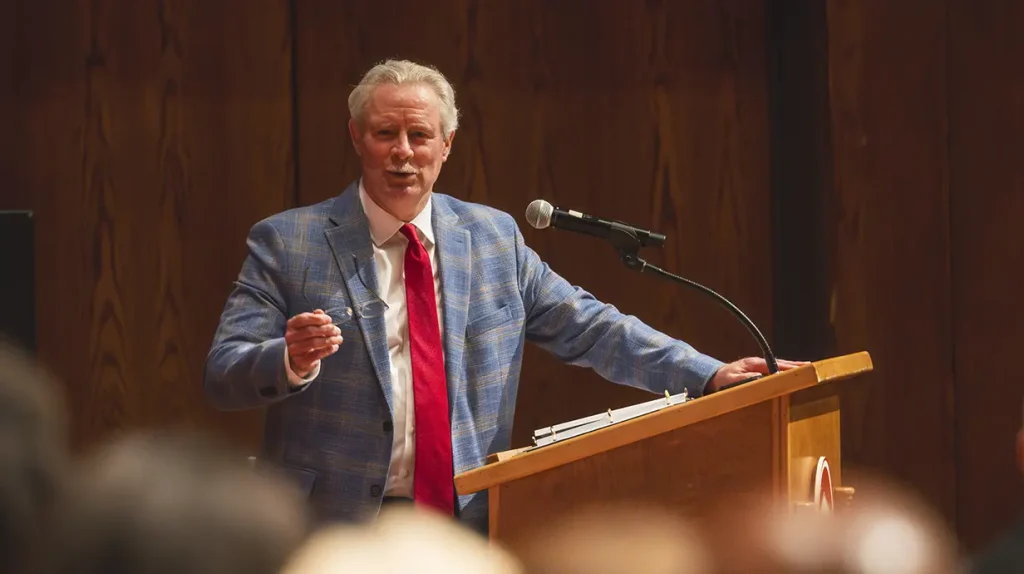
Sid Salter
- Columnist Sid Salter says few writers have more to share on effective storytelling than does Bragg, who still writes at a high level and can teach it effectively, too.
As a journalist, writer Rick Bragg has covered most of man’s inhumanities to man–war, poverty, mass-casualty terrorist attacks, drug crime, riots, school shootings, outrageous politicians, overt and often violent acts of racism, hurricanes, tornadoes, graft and corruption and garden-variety injurious behavior.
Bragg was at Mississippi State University last week as part of a statewide university public relations professional development conference. Few writers have more to share on effective storytelling than does Bragg, who still writes at a high level and can teach it effectively, too.
Born in Calhoun County, Alabama in 1969 to Charles Bragg and Margaret Bundrum Bragg, Bragg had a meteoric rise from The Aniston Star in 1980 to The Birmingham News, The St. Petersburg Times, and a Neiman Fellowship at Harvard in 1992 and a correspondent’s post at The New York Times in 1994.
Bragg received the 1996 Pulitzer Prize for Feature Writing for his coverage of the Oklahoma City bombing. There are numerous other professional awards and accolades.
But what his journalism students at the University of Alabama and readers of his regular writings for Southern Living and Gun & Garden magazines glean from their exposure to a writer’s writer is his reliable authenticity, his easy and self-deprecating manner and the depth of his desire to shine a light on the dignity of those he calls “my people.”
After the Pulitzer, Bragg wrote three signature bestselling non-fiction books about his people in rural Alabama: “All Over But the Shoutin’,” “Ava’s Man,” and “The Prince of Frogtown.”
The Bragg trilogy features recurring characters who are real. His “Shoutin’” novel chronicles his mother’s struggle to raise three children in rural Alabama with a mostly absentee and drunken father. She picked cotton, cleaned the homes of wealthier people, and took in laundry to provide for Rick and his two brothers.
His second book, “Ava’s Man,” was the story of his mother’s father, Charlie Bundrum, a laborer, roofer, outdoorsman, and bootlegger who made most of the whiskey he sold in illegal stills during the Great Depression – the only way he knew to feed his family.
“The Prince of Frogtown” was Bragg’s memoir about his father, in which he explores the reasons why his father largely abandoned and betrayed his family and the role that the Korean War and alcohol consumption played in his father’s decisions – all against the backdrop of becoming a father himself to a young boy through and his fears about repeating his father’s mistakes.
Who are his people? Working people who never catch a break. Older people in poverty and isolation who lack options for appropriate care. The mentally and emotionally challenged who can’t fend for themselves. Blue-collar folks pushing the same rock up the same hill for a lifetime,
The fiction of Mississippi’s Nobel Prize-winning literary icon William Faulkner greatly centers on what many biographers and critics have called his examination of the decline and decay of the wealthy upper crust of Southern society.
In Faulkner’s great works, the author creates and sustains a fictional Yoknapatawpha County, Mississippi, with a county seat of Jefferson – a creation transparently inspired by the real Lafayette County, Mississippi, in the town of Oxford, where the New Albany native lived most of his life.
Faulkner’s novels create 10 recurring families (beginning in 1927’s “Sartoris”) and unveil characters whose families populate the broad body of Faulkner’s writings – the aristocratic landed gentry of the Sartoris and Compson families and the Snopes family representing the new-money New South, who the author likens to rats and other vermin.
It is Faulkner’s so-called “Snopes” trilogy (“The Hamlet,” “The Town,” and “The Mansion”) that joins with “The Sound and the Fury” and “Light in August” as his greatest works.
In UVA’s Digital Yoknapatawpha Project created by Faulkner scholar Stephen Railton, the Snopes were described when “Faulkner told an approving audience at Virginia in 1958, for example, that there was ‘not any sort of shoddiness and sorriness and baseness that some Snopes wasn’t capable of.’”
Braggs experienced both sides of that description. Snopes Trilogy, meet the Bragg Trilogy. Impoverished working people in the South have been ignored, second-guessed, and pushed to extremes by the changing and often unkept promises of politicians and unrelenting poverty. Faulkner and Bragg gave them important forums to explore their truths.








